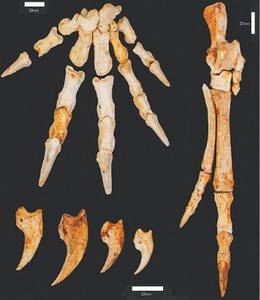PARIS: The most remarkable thing about the nearly perfect fossils was not that they belonged to 40-kilo kangaroos that mysteriously evolved to climb trees, though that was remarkable enough.
What really startled paleontologists is that southwestern Australia’s Nullarbor Plain, site of the discovery, is a treeless shrubland and was thought to be that way even when the newly named Congruus kitcheneri hopped — and, apparently, climbed — across its reaches some 50,000 years ago.
The Latin-derived name says it all: “Null” for “none”, and “arbor” for “tree”.
The barren, slug-shaped region — 1,100 kilometres (700 miles) from head to tail — is even bookended by road signs that say, in all capital letters, “END OF TREELESS PLAIN”.
“I remember looking at the bones on the hands and the feet with their big, curved claws and saying to my colleague, ‘You’re probably not going to believe me, but I think it was climbing trees!’” recalled Natalie Warburton, a researcher at the Centre for Climate-impacted Terrestrial Ecosystems at Murdoch University in Perth.
The “hugely unexpected” tree-climbing behaviour, detailed on Wednesday in the journal Royal Society Open Science, is certainly significant, she said.
With the exception of distant cousins in the tropical canopy of New Guinea, the 60-odd living species of kangaroos, wallabies and other marsupials in the family macropodidae — all descendents of tree-dwelling, possum-like ancestors — have long since evolved to make their way on terra firma.
